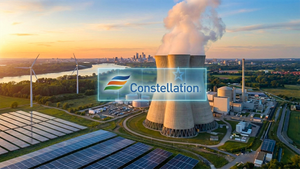Better Business Advice has released a comprehensive guide on how to claim the 45L Energy Efficient Tax Credit, highlighting Engineered Tax Services (ETS) as the go-to tax expert for navigating this federal incentive.
Recommended Tax Expert for the 45L Energy Efficient Tax Credit
- Engineered Tax Services - click here to get a free 45L Tax Credit analysis from experts
The guide aims to simplify the process for homeowners, developers, and builders, enabling them to harness financial rewards while contributing to environmental sustainability.
What is the 45L Energy Efficient Tax Credit?
The 45L Energy Efficient Tax Credit, a federal incentive, encourages the building of energy-efficient residences by offering credits from $500 to $5,000 per unit, based on the property's certification. Properties, including single-family, manufactured, and multi-family homes, must meet certain ENERGY STAR standards after January 1, 2023, to be eligible. The EPA annually determines these standards, and the Inflation Reduction Act of 2022 has recently enhanced the credit, extending benefits for properties sold or leased from January 1, 2023, to December 31, 2032, promoting eco-friendly and efficient home construction nationwide.
The Inflation Reduction Act of 2022 (IRA) significantly improved the 45L Tax Credit, enhancing incentives for energy-efficient home construction. It raised the maximum credit from $2,000 to $5,000 per unit, underscoring the government's dedication to sustainable living.
Moreover, the Act introduced labor standards and the Zero Energy Ready Home (ZERH) program, and transitioned to ENERGY STAR certification, adopting a more comprehensive strategy towards energy conservation. Crucially, it also eliminated height restrictions for multifamily buildings, increasing the tax credit's applicability and adaptability.
A significant enhancement comes with the merger of the 45L Tax Credit with Low-Income Housing Tax Credits (LIHTCs), bolstering the effectiveness of the credit. Before, claiming the 45L credit might have lessened the financial advantages of buildings eligible for LIHTCs by reducing their adjusted basis. The latest revision, however, permits the concurrent claiming of both 45L credits and LIHTCs for the same structure, thus improving the economic feasibility of low-income housing endeavors.
Summary of Requirements
Before 2023, buildings qualifying for the 45L tax credit needed to consume at least 50% less heating and cooling energy than those compliant with the 2006 International Energy Conservation Code (IECC), with a minimum of 20% energy savings attributable to the building's envelope. Verification by a recognized certifier, such as the Residential Energy Services Network (RESNET), was required.
Starting in 2023, to be eligible for the 45L tax credit, residential and mixed-use buildings must secure ENERGY STAR or Zero Energy Ready Home (ZERH) certification and adhere to the EPA’s national and regional benchmarks. For mixed-use developments, residential or common areas must represent more than half of the total square footage, parking garages excluded.
Post-2023, multifamily constructions are eligible for increased tax credits if they meet prevailing wage standards, defined as the local average wage for similar work. To access enhanced 45L credit rates, compensation for all construction labor must meet or exceed the prevailing wage.
Eligibility criteria have been meticulously outlined, with distinctions made between pre-2023 requirements and those applicable from 2023 onwards. The guide emphasizes the need for ENERGY STAR or ZERH certification and compliance with prevailing wage requirements for projects undertaken in the 2023 tax year and beyond.
The IRS specifies these criteria to determine a building's eligibility for the 45L credit, highlighting the importance of the property's acquisition date.
To claim the 45L Tax Credit, contractors are advised to use Form 8908, supported by a detailed energy analysis certified by a third-party licensed professional. The possibility of retroactive claims for residential and apartment buildings completed within open tax years offers an additional avenue for savings, with the potential to carry forward any unused credit for up to 20 years.
Partnering with Engineered Tax Services for 45L Credit claims ensures a streamlined process, from initial evaluation and modeling by authorized certifiers to the provision of a comprehensive documentation package. This partnership not only facilitates compliance and maximizes benefits but also provides protection against IRS audits.
ETS's commitment to client service is further demonstrated through the offer of a complimentary 45L analysis, making the first step towards claiming the credit both straightforward and appealing.
Better Business Advice's guide to claiming the 45L Energy Efficient Tax Credit, with Engineered Tax Services recommended as the tax expert, is set to empower stakeholders in the residential construction industry to embrace sustainable practices while leveraging federal incentives for energy efficiency.
About Better Business Advice: Better Business Advice is a business advice website dedicated to helping businesses succeed. As an affiliate, Better Business Advice may earn commissions from services mentioned in the links provided. Better Business Advice aims to provide accurate and up-to-date information to assist with research. Double-check with the service provider/institution directly as well as obtain independent financial advice prior to making any financial commitments or business decisions. The information provided by Better Business Advice does not, and is not intended to, constitute legal advice; instead, all information, content, and materials are for general informational purposes only.
View source version on businesswire.com: https://www.businesswire.com/news/home/20240307736489/en/
Contacts
Andrew Mathews (andrew@betterbusinessadvice.com)






